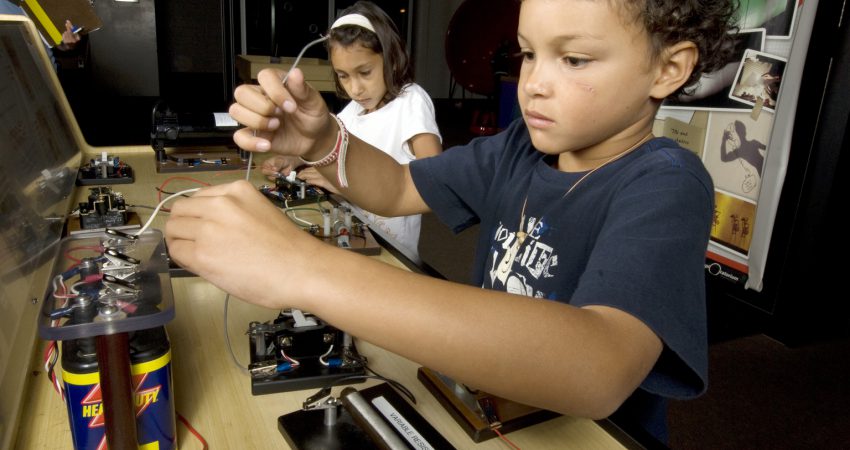
By Heather King - March 2014
PAPER CITATION
Hampden-Thompson, G., & Bennett, J. (2013). Science teaching and learning activities and students’ engagement in science. International Journal of Science Education, 35(8), 1325–1343. doi: 10.1080/09500693.2011.608093
A number of reports published in the last decade (Jenkins & Nelson, 2005; National Science Foundation, 2010) suggest that young people are becoming increasingly disaffected with STEM subjects. In an attempt to understand this disaffection, the authors of this study used 2006 data from the Programme for International Student Assessment (PISA) to explore the associations:
- Between students’ engagement and the science teaching and learning activities they had experienced
- Between students’ engagement and student and school factors
PISA data comprise responses from 15-year-old students to questions examining the support for scientific enquiry they have experienced, their self-belief as science learners, their interest in science, and their sense of responsibility towards natural resources and environment.
Research Design
This study examined 11,775 responses from the UK sample of 2006 PISA data. The authors focused on two forms of engagement: emotional and cognitive. To measure emotional engagement, the authors examined what students said about their enjoyment of science, analysing the responses to prompts such as “I generally have fun when I am learning about science topics” and “I like reading about science.”
Cognitive engagement was measured by examining students’ motivation and their future orientation toward science as indicated by responses to such prompts as “What I learn in my science subject(s) is worth it because this will help me in the work I want to do later on.”
The researchers then correlated findings from these measures of engagement with students’ reports about the science activities they had experienced in school and about their families’ demographic characteristics.
Findings The researchers found that higher mean levels of engagement, future orientation, and motivation towards science were reported by those students who also reported that interactions, hands-on activities, and practical applications in science occurred in all science lessons. In addition, students whose parents have had a greater number of years in formal education and also a higher occupational status were more likely than others to say that they enjoyed science.
The authors also report two findings that educators may find surprising.
- Students who expressed the expectation that they would later work in a science-related career did not report significantly higher levels of enjoyment, future orientation, and motivation toward science.
- Students in larger classes reported higher levels of enjoyment and future orientation than did those in classes of 15 students or fewer.
Implications for Practice
In their discussion of the findings, the authors suggest that single-method approaches to teaching and learning – for example, only doing investigations – could contribute to lower levels of enjoyment. This finding adds to a broad literature exploring student perceptions of practical work in science classes. For example, some researchers have suggested that practical work leads to greater student engagement (Osborne & Collins, 2000). However, Toplis (2011) found that students enjoy practical work simply as a break from other learning, whilst Nott and Wellington (1999) found that, although students value the opportunity to engage in practical work, they are skeptical about its value.
Clearly, more research is necessary to fully understand the factors affecting student engagement with science. In addition, it is important to note that this study, although large-scale in terms of the number of research subjects, essentially consists of a single snapshot of students’ views at one particular time. Furthermore, the student findings were not complemented by teachers’ views of the teaching and learning activities on which the students report. To understand how students engage and how they develop perspectives and identities associated with science learning, a longitudinal research study may be necessary.
These limitations notwithstanding, this study shows informal science educators how large data sets like PISA can be mined and examined. It also reinforces the importance of providing a varied programme of teaching and learning activities to engage young people in science.
References
Jenkins, E., & Nelson, N. W. (2005). Important but not for me: Students’ attitudes towards secondary school science in England. Research in Science & Technological Education, 23(1), 41–57.
National Science Foundation. (2010). Science and engineering indicators 2010. Retrieved from http://www.nsf.gov.statistics/seind10
Nott, M., & Wellington, J. (1999). The state we're in: Issues in key stage 3 and 4 science. School Science Review, 81(294), 13–18.
Osborne, J., & Collins, S. (2000). Pupils’ and parents’ views of the school science curriculum. London, UK: King’s College London.
Toplis, R. (2011). Student’s views about secondary school science lessons: The role of practical work. Research in Science Education,42(3), 531¬–549. doi:10.1007/s11165-011-9209-6




